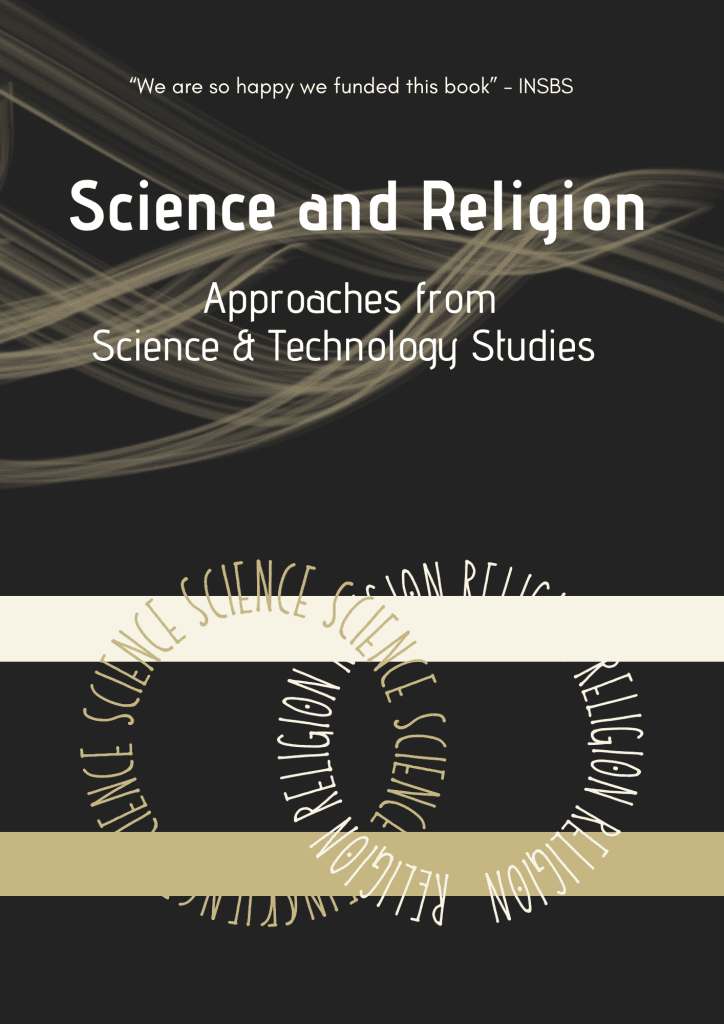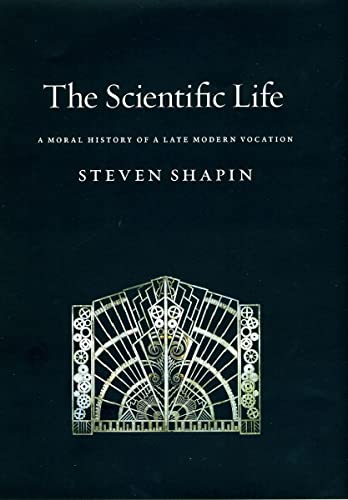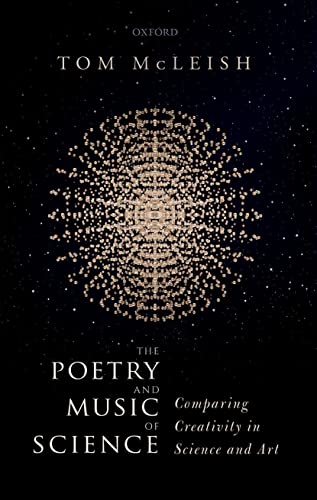
The Cover That Wasn’t To Be
By Dr. Thoko Kamwendo
I am busy putting together an edited collection of essays that take an STS approach to the study of science and religion, funded by the INSBS. As many of you know, there are several parts to creating an edited volume, including making tricky decisions about the cover.
I recently received options for the front cover of the volume from Palgrave who will hopefully publish it sometime in the new year. As a freelance graphic designer, I really wanted a chance to design the front cover myself. But it was not to be. There are rules around covers of edited volumes that we have to abide by. So, I want to do the next best thing and share it with all of you in this blog post. I call it the Cover That Wasn’t to Be.

Let me share the thinking behind it. The original idea behind the book was to give STS away to those who have an interest in science and religion. In other words, we wanted to share existing approaches to the topic of science and religion grounded in STS with colleagues exploring intersections between science and religion from other disciplinary backgrounds. But as the authors came together, we quickly realised that the volume also needed to be about giving religion away to colleagues in STS because, curiously, religion is not a common topic in STS.
All the chapters are drafted, and we have been busy commenting on each other’s work. What is immediately clear is that the chapters reflect the shared eclectic nature of STS and the emerging field of the social study of science and belief in society. They run the gamut from discussions about religion in STS, religion in science and science in religion to the value of STS approaches for understanding relationships between science, religion and society more broadly.
We have chapters on the incorporation of the Buddhist tradition in the neuroscience of meditation (Mareike Smolka), reimagining public orientations to evolution (James Riley), the religious influences in the work of Bruno Latour (Mike Brownnutt), reclaiming normativity in the study of science and belief in society (Will Mason-Wilkes), the Jewish ritual bath as a ‘small t technology’ (Cara Rock-Singer), prophetic tendencies in science communication (Hauke Riesch), sacrifice in environmentalism and farming (Caroline McCalman and Anna Krzywoszynska), theology, science and practice amongst Christian church leaders (Thoko Kamwendo), re-thinking science and religion through indigenous frameworks (Charlotte Sleigh), and returning religion to secular conceptions of society at work in STS (Caroline McCalman).
With such a diverse and dynamic range of topics, finding a thought-provoking cover proved to be an interesting challenge. In designing the cover, I was inspired by nonfiction works that have gone down the dark and moody route (think Steven Shapin’s The Scientific Life, Ecklund & Johnson’s Varieties of Atheism in Science, or Tom McLeish’s The Poetry and Music of Science).



But I also knew that my starting point would be the Venn diagram. A good friend of mine, who works as an art therapist and is one of the most brilliant people I know, once joked that everything is a Venn diagram. But there is some truth to that. Certainly, studying the intersections of science and religion evokes a sense of the Venn diagram – placing as much emphasis on the ways in which science and religion overlap and the ways they do not.
I tried to portray how in the study of science and religion, although we may not understand them to be separate ‘domains’ in a meaningful way, at times either science or religion may be foregrounded in what we do.
I also wanted to try to represent how, at times, the “science” of science and religion is obscured and vice versa. Often when this happens it is our job to make it visible and give it colour. In a design, this can be done either by adding a contrasting background colour or by taking the surrounding colours out to allow a phenomenon to appear more clearly. Many of the chapters in our collected volume do this metaphorically, by adding additional context to make the science and religion of it all stand out, or by stripping a case study of contextual layers that obscure the embedded interactions between science and religion.
You’ll see that the concentric circles are made up of words, specifically “science” and “religion”. Initially, I thought I wanted the circles to be made of images, but I found that representing either science or religion through symbols quickly became a sticky business. There are many (many!) symbols that could represent science and religion, but as we who work in these fields know, it is difficult, if not impossible, to find one symbol that satisfactorily represents either. Even choosing a series of symbols quickly starts to feel like an exercise in exclusion rather than inclusion. So, words it is.
Finally, at the INSBS early career researcher workshop in July, we were told by the wonderful Lois Lee that when thinking of outputs for a grant proposal it is a good idea to both think of the basics (like publications) and “add some sparkle.” This was wise advice, so I applied it to the cover. In this case, the sparkle was a set of intersecting lines that I initially drew to represent ‘fire’ for another graphic design project. (I ended up not using it for that project. I also changed the colour of the figure and turned it 90 degrees). It feels fitting to find a place for it on this cover. It adds some of that “sparkle” and, in my head anyway, it can represent the momentum we are experiencing in the broader study of science and belief in society.
I hope you like the Cover That Wasn’t to Be. Whatever your reaction, get in touch and let me know, I would love to hear your thoughts! And I’d love to hear from other people about how you are folding different kinds of creative expression into your academic work. Maybe you could consider writing a blog about it? Oh! and I hope you find the book both useful and entertaining when it is published (with a different cover, of course).

Dr. Thoko Kamwendo is an interdisciplinary researcher in the fields of history and sociology. Thoko is currently working as a Postdoctoral Researcher on the “Equipping Christian Leadership in an Age of Science” (ECLAS) project at St John’s College, Durham University. For more, please check out Thoko’s research profile.
